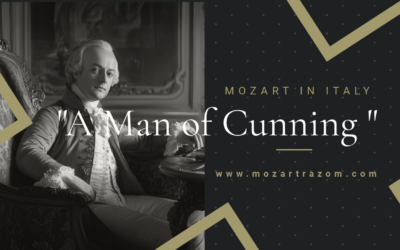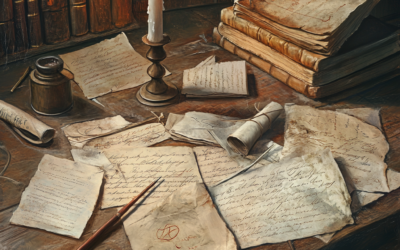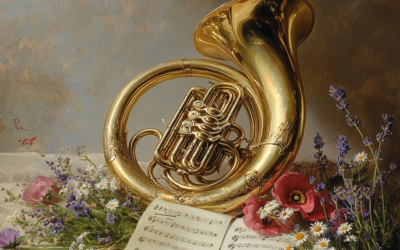Mozart's Symphonies
The Hidden Legacy of Michael Haydn
The persistent misattribution of works between Michael Haydn and Wolfgang Amadeus Mozart reveals a story of rivalry, imitation, and misrepresented genius. Even the famous Symphony No. 37 in G Major K.444, long considered a Mozart masterpiece, stands today as a testament to an intricate web of musical borrowings and historical misconceptions. As it turns out,
Mozart merely added an introduction to Haydn’s symphony, yet this was enough for it to remain falsely attributed to him for decades.
Such instances provoke questions about Mozart’s true originality and his family’s dismissive attitude toward the accomplished Michael Haydn.
Mozart: The Fall of the Gods
This book offers a fresh and critical look at the life of Wolfgang Amadeus Mozart, challenging the myths that have surrounded him for centuries. We strip away the romanticised image of the “natural genius” and delve into the contradictions within Mozart’s extensive biographies. Backed by nearly 2,000 meticulously sourced citations, this work invites readers to explore a deeper, more complex understanding of Mozart. Perfect for those who wish to question the traditional narrative, this biography is a must-read for serious music lovers and historians.
"How can one proclaim Mozart's originality when so much of his success relied on the brilliance of Michael Haydn?"
Mozart: The Fall of the Gods
Unveiling the True Composer Behind the Notes
The Illusion of Originality
The path of confusion over authorship winds through Mozart’s symphonies, culminating even with the acclaimed Jupiter Symphony, K.551. Its anonymous manuscript, still housed in the Biblioteca Estense in Modena, continues to be overlooked in modern critical studies. Yet, the most perplexing case remains Symphony No. 37 in G Major, K.444. Once celebrated as an authentic Mozart composition, it later emerged as a mere embellishment upon Michael Haydn’s Symphony No. 25, dated 23 May 1783. Mozart’s only contribution? A brief Adagio maestoso before Haydn’s Allegro movement.
A Legacy of Borrowing
Mozart’s alterations to Haydn’s original symphony went beyond the mere addition of an introduction. He modified the central Andante sostenuto, stripping away the bassoon part, arguably diminishing its richness. Historians have postulated that Mozart might have copied Haydn’s work to better understand his style, or as a tribute to the elder composer. Yet, the removal and adaptation suggest a more complex intent—an effort to make Haydn’s symphony less recognisable. Even today, musicologists struggle to accept that this was more than a homage. No evidence from letters, concert programs, or noble diaries ever credits Michael Haydn.
The Unacknowledged Influence
Mozart’s dependence on Michael Haydn’s compositions surfaces repeatedly. While Mozart’s supporters frame these borrowings as reverent, the letters between Wolfgang and his family tell a different story. For instance, a young Mozart wrote from Naples in 1770, anxiously requesting minuets by Haydn. He not only copied them but openly wondered if they had been “stolen.” Despite his supposed reverence, he pleaded for more minuets, openly mocking Haydn’s work in correspondence.
The Mozart family’s disdain for Michael Haydn intensified over time, painting him as an unreliable drunkard. Leopold Mozart even referred to Haydn as one of the “asinine” musicians of Salzburg. Despite this, Wolfgang relied on Haydn’s compositions, even for performances in Vienna. One has to wonder—if Mozart was such a master of counterpoint, why did he need to borrow fugues from Haydn?
Reassessing Mozart’s Musical Inheritance
The catalogue of music misattributed to Mozart is extensive. Works like the Adagio and Fugue in D Major (K.291) and various sacred compositions were lifted from Haydn, either wholly or in part. The letters reveal a pattern of plagiarism, mockery, and opportunism. The famous request for Haydn’s Tres sunt and the Lauda Sion—which ended up in the Köchel catalogue under Mozart’s name—only reinforce this narrative. The myth of Mozart as an unassailable genius collapses when faced with the evidence of his extensive borrowing from a composer his family ridiculed.
A Final Irony
In the end, Michael Haydn remains an unsung hero, a composer whose works formed the bedrock of Mozart’s supposed achievements.
You May Also Like
A Revolutionary Encounter at Cremona Musica
Sharing insights on Mozart and the Neapolitan school at Cremona Musica, the premier global stage for music and culture.
#1 A Man of Cunning
In the end, Leopold Mozart’s life was a testament to survival in a world where his talents were often overshadowed by those of his more gifted contemporaries and his own son. While his “Violinschule” remains a notable contribution to music pedagogy, it is clear that Leopold’s legacy is as much about his ability to navigate the challenges of his time as it is about his musical achievements. His story is one of ambition, adaptation, and the lengths to which one man would go to secure his place in history, even if that place was built on borrowed foundations.
@MozartrazoM
Mozart’s Letters: A Legacy of Disappearances, Edits, and Forgeries
Mozart’s letters reveal missing originals, questionable authorship, and forgeries, adding complexity to his legacy.
The Curious Case of Mozart’s “Lullaby”
Though long credited to Mozart, the lullaby “Schlafe mein Prinzchen, schlaf ein” hides a murky history. Initially published by Nissen, Constanze’s second husband, it has endured as one of Mozart’s supposed works—despite a trail of doubts. In 1798, Constanze herself noted sending “another piece of Mozart’s in place of the lullaby,” raising questions about its origins. By the 20th century, researchers revealed it as the work of lesser-known composers, yet it remains deceptively tied to Mozart, its myth surviving through mere footnotes.
The Contradictions Behind Mozart’s Horn Concerto K.412
The authenticity of Mozart’s Horn Concerto K.412 remains hotly debated, as the work bears numerous contradictions in its manuscript history. The first movement may be original, but what about the rest? The inclusion of Franz Xaver Süssmayr and later editorial meddling raises serious questions about what we are really listening to when we hear this ‘Mozart’ concerto.
The Questionable Attribution of Mozart’s Offertorium K.34
Attributing Offertorium K.34 to Mozart is not just misleading, it reflects the careless methods used by 19th-century scholars to inflate his legacy. Without an autograph or solid evidence, this work should not be considered part of his output.”







